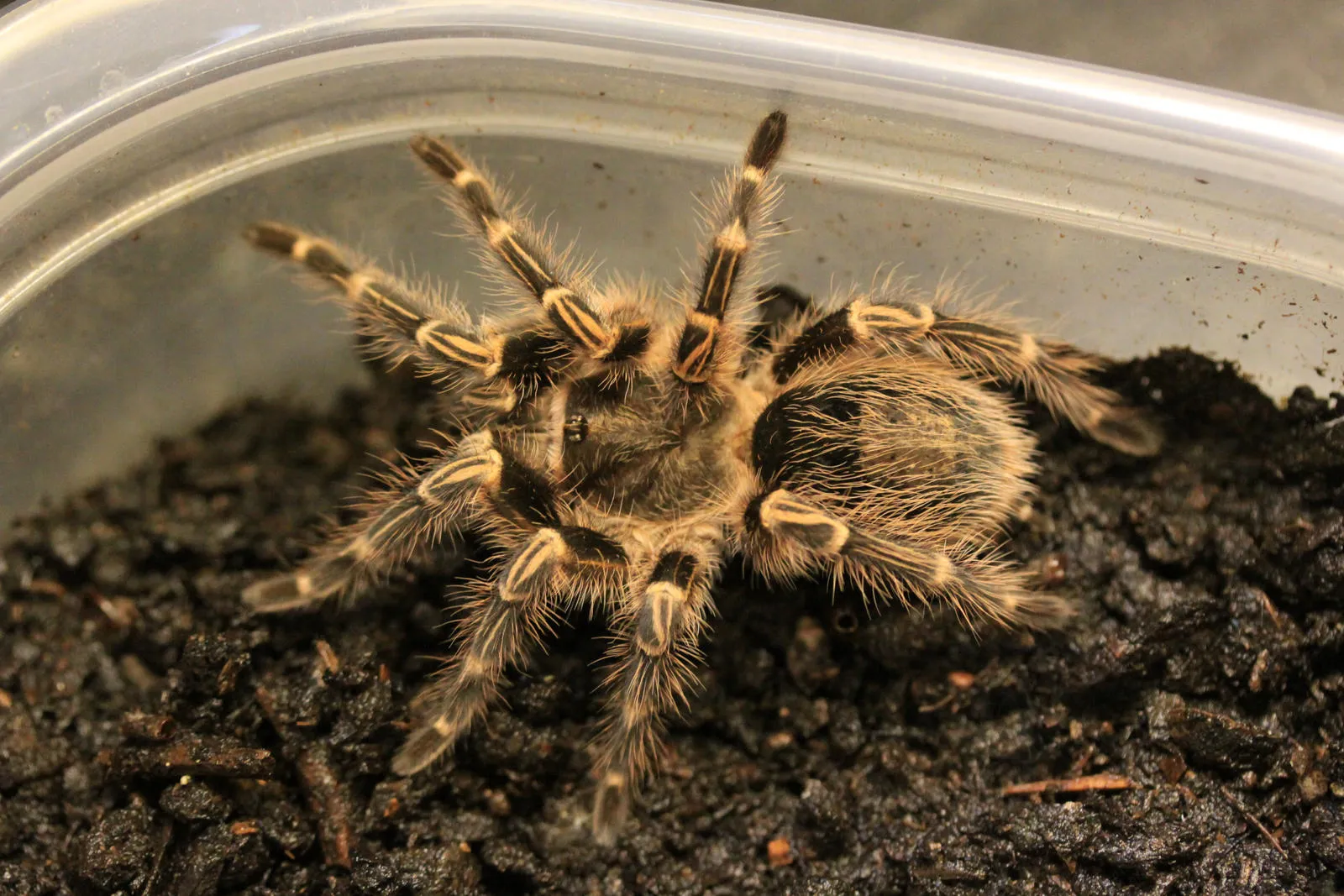What is a White Knee Tarantula (Acanthoscurria geniculata)?
The White Knee Tarantula, scientifically known as Acanthoscurria geniculata, is a captivating and popular species among tarantula enthusiasts. Native to the tropical regions of Brazil, the White Knee Tarantula, also known as the Giant White Knee, is celebrated for its impressive size, striking appearance, and relatively docile temperament, making it an appealing option for both novice and experienced keepers. These spiders are ground-dwelling arachnids, known for their robust build and the distinctive white or cream-colored bands on their legs, which give them their common name. Their presence in the pet trade has surged because of their manageable care requirements compared to other tarantula species, along with their impressive size. The White Knee Tarantula offers a rewarding experience for those interested in observing the fascinating lives of these arachnids, and it also demonstrates the beauty and wonder of the natural world.
Appearance and Characteristics of the White Knee Tarantula
The White Knee Tarantula is a visually striking creature, immediately recognizable by its contrasting black and white coloration. The spider’s body is primarily a velvety black, providing a dramatic backdrop for the namesake white or cream-colored bands that adorn its knees. These bands are most prominent on the legs, creating a striking pattern that is both visually appealing and a key identifying feature. The body of the White Knee Tarantula, including the carapace and abdomen, is covered in fine hairs, adding texture and depth to its appearance. Their chelicerae, or mouthparts, are strong and capable, used for both capturing prey and injecting venom. The abdomen is typically slightly larger than the carapace and can vary in size depending on the individual’s feeding habits and overall health. Their overall appearance is a combination of elegance and power, making them a fascinating subject for observation and admiration.
Size and Lifespan of White Knee Tarantulas
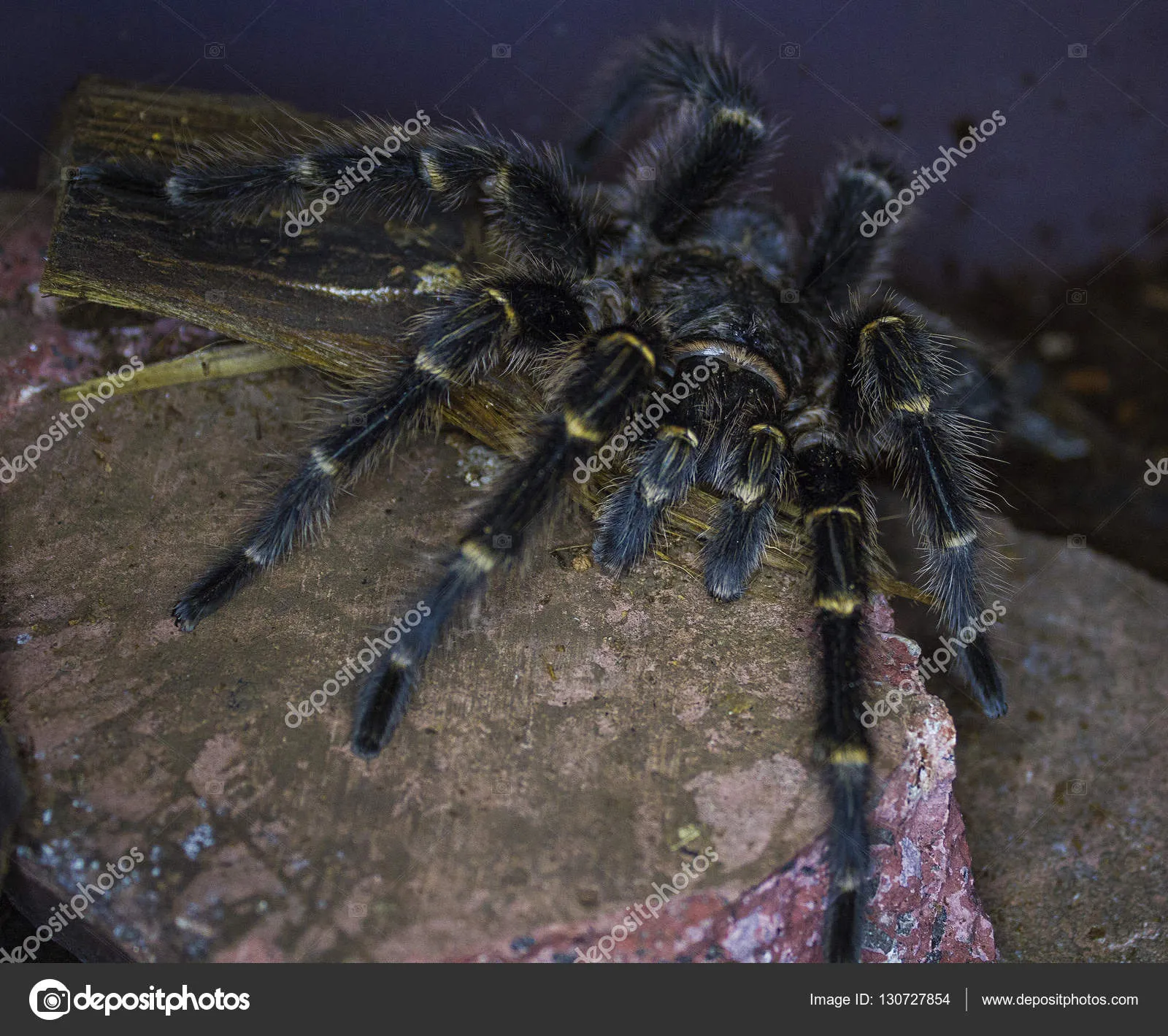
One of the most impressive aspects of the White Knee Tarantula is its size. Females can reach a leg span of up to 8–9 inches (20–23 cm), making them one of the larger tarantula species available in the pet trade. Males are generally smaller, with a leg span that is typically less than that of females. The size of the tarantula can also vary depending on individual genetics, diet, and overall care. Their lifespan is another notable characteristic. Females have a considerably longer lifespan than males, typically living for 10–15 years or even longer, provided they receive proper care. Males, on the other hand, have a shorter lifespan, usually only surviving for 2–3 years after reaching maturity. This difference in lifespan is a crucial consideration for anyone thinking about owning a White Knee Tarantula, as it influences the long-term commitment and care required.
Are White Knee Tarantulas Good Pets?
White Knee Tarantulas can be excellent pets for individuals who are prepared to provide the necessary care and understand their specific needs. They are generally considered to be a good choice for those new to tarantula ownership, as they are typically less defensive than other species and their care requirements are relatively straightforward. However, it’s important to recognize that White Knee Tarantulas are still wild animals, and they should be handled with caution and respect. Their venom, while not deadly to humans, can cause localized pain and discomfort. Their overall docile temperament makes them easier to observe and care for, but it is still important to provide an appropriate enclosure, maintain proper humidity and temperature, and offer a suitable diet to keep them healthy and happy. Owners must do their research to ensure they are fully informed about the commitment required before obtaining one of these fascinating arachnids.
White Knee Tarantula Temperament and Handling
The temperament of the White Knee Tarantula is often cited as a positive attribute for potential owners. They are generally known for their calm demeanor and are less likely to display aggressive behaviors, such as biting or kicking urticating hairs, compared to other tarantula species. This doesn’t mean they are completely harmless, but their tendency to be more docile makes them a better choice for those new to tarantula ownership. Handling a White Knee Tarantula is generally not recommended unless absolutely necessary, such as during enclosure maintenance or health checks. They can be easily injured if dropped, and their natural inclination is to flee, which can lead to accidental falls. Owners should always approach them with respect and understanding. It is crucial to remember that they are still wild animals and should be handled with care and caution.
White Knee Tarantula for Sale
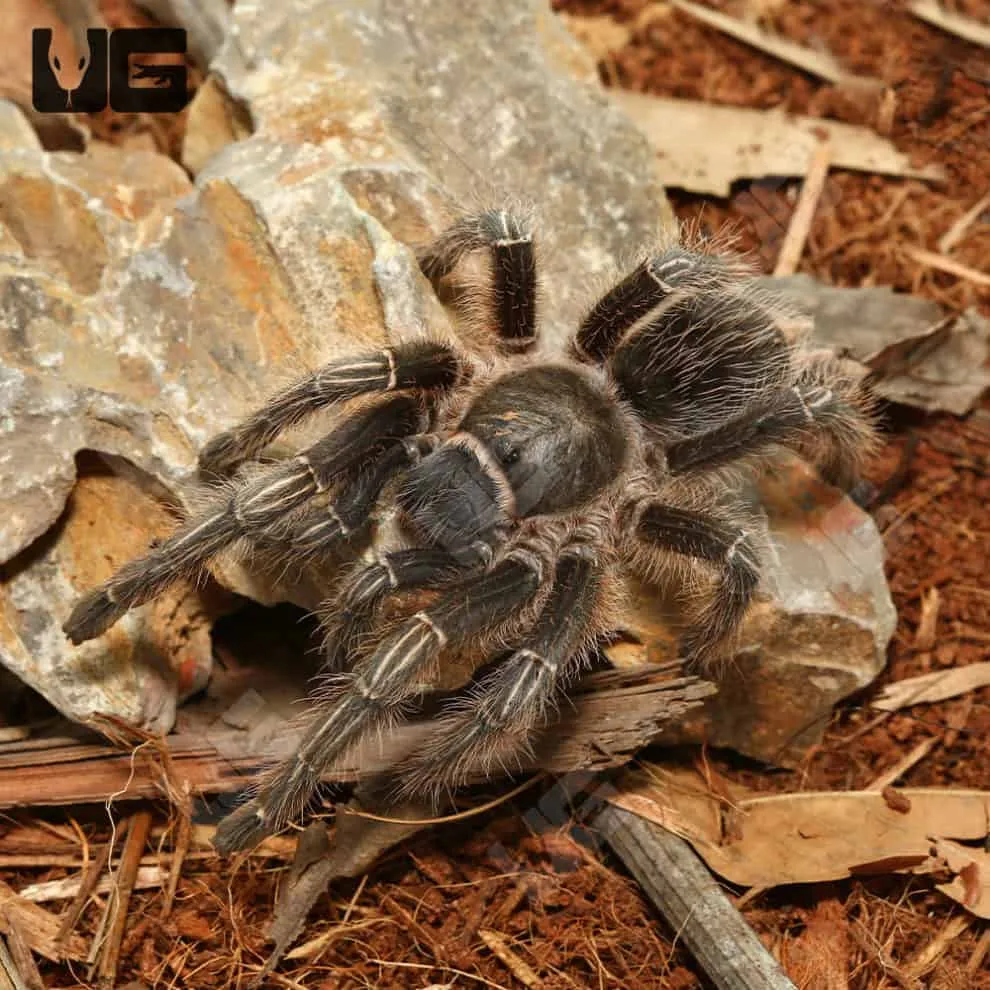
If you’re considering purchasing a White Knee Tarantula, you’ll be pleased to know that they are commonly available for sale through various sources. The White Knee Tarantula’s popularity among arachnid enthusiasts has made them readily accessible, making it easier to find one to suit your needs. Buying a White Knee Tarantula gives you an excellent opportunity to experience the satisfaction and wonder of caring for these unique creatures. You’ll have the chance to observe their fascinating behaviors, provide them with an enriching habitat, and appreciate their natural beauty. Additionally, you can become part of a community of tarantula enthusiasts, sharing experiences and learning from others who share your interest. When you own a White Knee Tarantula, you’re not just acquiring a pet, you’re opening the door to a captivating and rewarding hobby.
Where to Find White Knee Tarantulas for Sale
White Knee Tarantulas can be found for sale through a variety of channels. Reputable online retailers specializing in exotic pets are a primary source. These retailers often offer a wide selection of tarantulas and provide detailed information about the species, including their origin, care requirements, and temperament. Local reptile and exotic pet stores are also good places to look, as they frequently stock White Knee Tarantulas. Attending reptile shows and expos can provide another excellent opportunity to purchase a White Knee Tarantula and meet with breeders and other enthusiasts. Buying from a reputable breeder or seller is paramount for ensuring you acquire a healthy specimen. Always make sure you are buying from a seller with a good reputation. Before purchasing, it’s crucial to research the seller, read reviews, and confirm that they prioritize the health and well-being of their animals.
What to Look for When Buying a White Knee Tarantula
When buying a White Knee Tarantula, there are several key factors to consider to ensure you are getting a healthy and well-cared-for specimen. First and foremost, inspect the tarantula’s physical condition. Look for a tarantula that has a full abdomen, indicating it is well-fed and hydrated, and check for any signs of injury, such as missing legs or damaged pedipalps. Ensure that the tarantula moves with ease and agility, and that it displays no signs of lethargy or weakness. Check the enclosure to make sure it is set up properly, with appropriate substrate, a water dish, and hiding places. If possible, inquire about the tarantula’s feeding history. A healthy tarantula should have a good appetite and regularly consume its prey. Consider the tarantula’s overall appearance, and ensure it has a vibrant coloration. Buying from a reputable seller is critical to getting a healthy White Knee Tarantula.
White Knee Tarantula Care
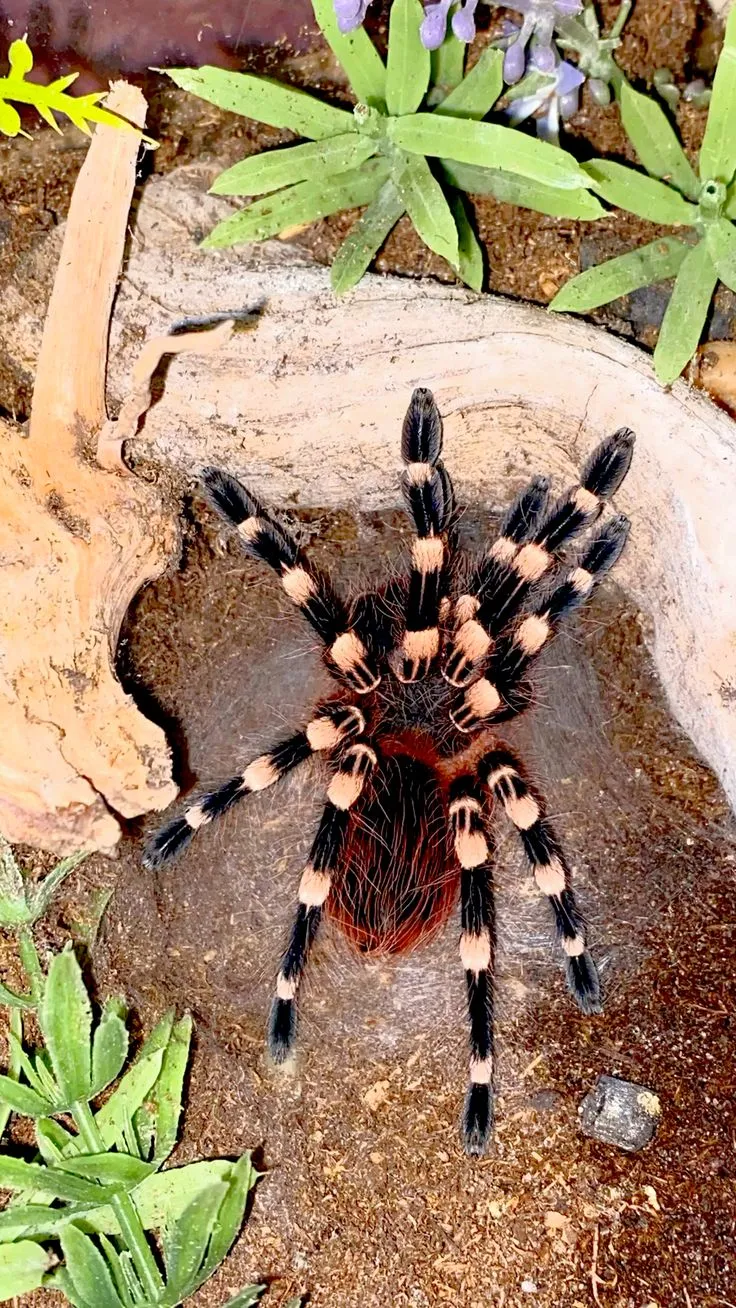
Caring for a White Knee Tarantula involves creating an environment that mimics its natural habitat and providing proper nutrition and maintenance. Setting up the right enclosure, maintaining appropriate humidity and temperature levels, and ensuring a balanced diet are all essential elements. With proper care, a White Knee Tarantula can thrive in captivity and offer an engaging and rewarding pet ownership experience. Understanding the specific requirements for this species is critical to the health and well-being of the tarantula. By prioritizing their needs, you can build a strong bond and enjoy the unique qualities of this fascinating arachnid.
Housing and Enclosure Setup
The enclosure setup is crucial for the well-being of a White Knee Tarantula, and it should replicate their natural environment as closely as possible. A glass or acrylic terrarium is generally recommended, providing clear visibility of the tarantula. The size of the enclosure should be appropriate for the size of the tarantula. A juvenile tarantula can start in a smaller enclosure, but as they grow, they will require a larger space. A good guideline is to provide an enclosure that is at least twice the tarantula’s leg span in width and length, and the height should be sufficient to prevent escape. Ventilation is essential, and the enclosure should have well-placed air vents to ensure proper airflow and prevent the buildup of moisture. The White Knee Tarantula is a ground-dwelling species, so the enclosure should be more spacious horizontally than vertically.
Substrate and Decor
The choice of substrate plays an important role in maintaining the correct humidity levels and providing a natural environment for your White Knee Tarantula. A substrate that retains moisture well is essential, as these tarantulas require a humid environment. Options such as a mix of coco fiber, peat moss, and vermiculite are popular choices. The substrate should be deep enough to allow the tarantula to burrow if it chooses. Providing decor within the enclosure not only enhances its aesthetic appeal but also enriches the tarantula’s environment. Include items such as a hide, like a piece of cork bark or a half-log, to provide a secure retreat. Fake plants, such as silk or plastic foliage, can offer additional hiding places and help maintain humidity levels. Ensure that all decor items are stable and cannot tip over or crush the tarantula.
Feeding and Hydration
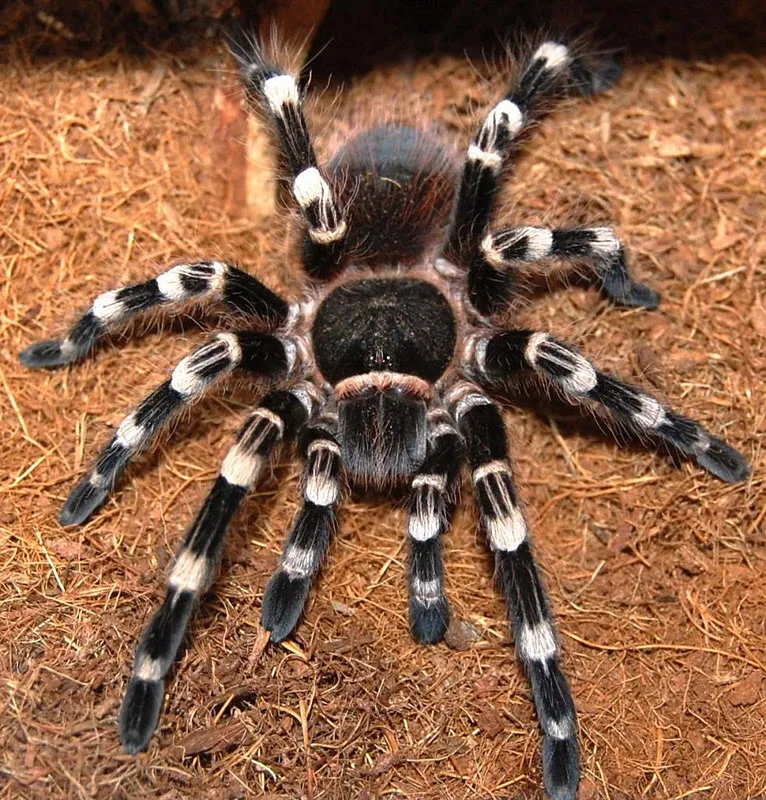
Feeding a White Knee Tarantula involves providing a balanced diet of live insects. Crickets, roaches, and mealworms are all suitable options. The frequency of feeding will depend on the tarantula’s age and size. Young tarantulas should be fed more frequently, typically two to three times a week, while adults can be fed once or twice a week. The size of the prey should be appropriate for the tarantula. Avoid offering prey that is larger than the tarantula’s body, as it could injure the tarantula or cause it to refuse the meal. Clean, fresh water is essential for hydration. Always provide a shallow water dish filled with clean water and regularly check to ensure that it is full. The water dish should be shallow enough to prevent the tarantula from drowning. A well-balanced diet and proper hydration are crucial for maintaining the health and vitality of your White Knee Tarantula.
White Knee Tarantula Health
Maintaining the health of your White Knee Tarantula involves being vigilant in monitoring its behavior, environment, and overall condition. Regular observation and preventative care are crucial to detect and address potential health issues. Observing your tarantula closely for any signs of illness or stress is essential. Paying attention to its eating habits, activity level, and any changes in behavior can help you identify potential problems early on. A healthy tarantula will typically have a good appetite, be active and alert, and display normal behaviors. Promptly addressing any health concerns can make a significant difference in the tarantula’s overall well-being. Providing a clean environment, proper nutrition, and maintaining appropriate temperature and humidity levels are also crucial components of preventative care, which will keep your pet healthy and strong.
Common Health Issues
White Knee Tarantulas, like any pet, can be susceptible to various health issues. Some of the most common problems include dehydration, fungal infections, and injuries. Dehydration can result from insufficient humidity or lack of access to fresh water. Fungal infections can be caused by poor hygiene and inadequate ventilation. Injuries can occur from falls, bites from live prey, or improper handling. Recognizing the signs of these issues is the first step in addressing them effectively. Signs of dehydration include a wrinkled abdomen, lack of appetite, and lethargy. Fungal infections may manifest as discoloration on the carapace or abdomen, or unusual molting. If you notice any of these symptoms, consult with an experienced tarantula keeper or a veterinarian with knowledge of arachnids to get proper advice and treatment options.
Preventative Care and Veterinary Visits
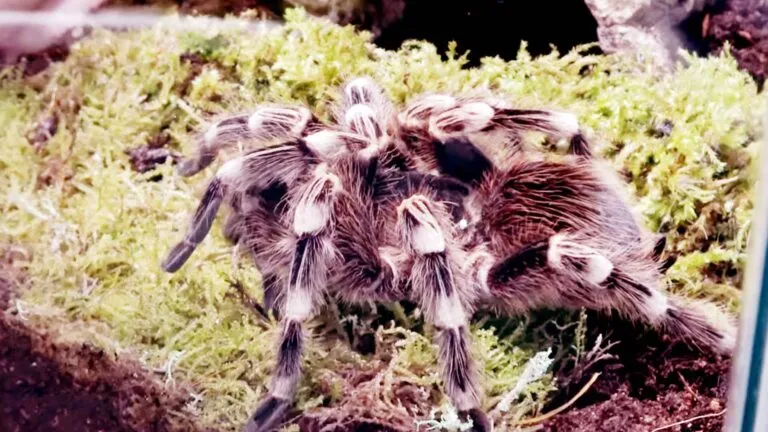
Preventative care plays a vital role in keeping your White Knee Tarantula healthy. Maintaining a clean enclosure, providing a balanced diet, and ensuring proper humidity and temperature are all essential aspects of preventative care. Regularly cleaning the enclosure and removing any uneaten food is critical to prevent the growth of mold and bacteria, which can lead to health problems. While routine veterinary visits may not always be necessary, consulting with a veterinarian specializing in exotic animals can be beneficial, particularly if you suspect a health issue. They can offer expert advice and treatment options. Regular inspections and maintaining optimal environmental conditions will significantly improve the health and well-being of your White Knee Tarantula.
Conclusion
The White Knee Tarantula can make a fascinating and rewarding pet for those willing to provide the necessary care and attention. They offer an opportunity to appreciate the beauty and wonder of the arachnid world. From their striking appearance and relatively docile temperament to their manageable care requirements, White Knee Tarantulas provide a captivating pet experience. Owning a White Knee Tarantula opens a door to a rewarding and enriching hobby. By understanding their specific needs, providing a suitable habitat, and prioritizing their health and well-being, you can create a thriving environment where your White Knee Tarantula can flourish for years to come. Remember that responsible ownership is key to ensuring the health and happiness of these amazing creatures.
